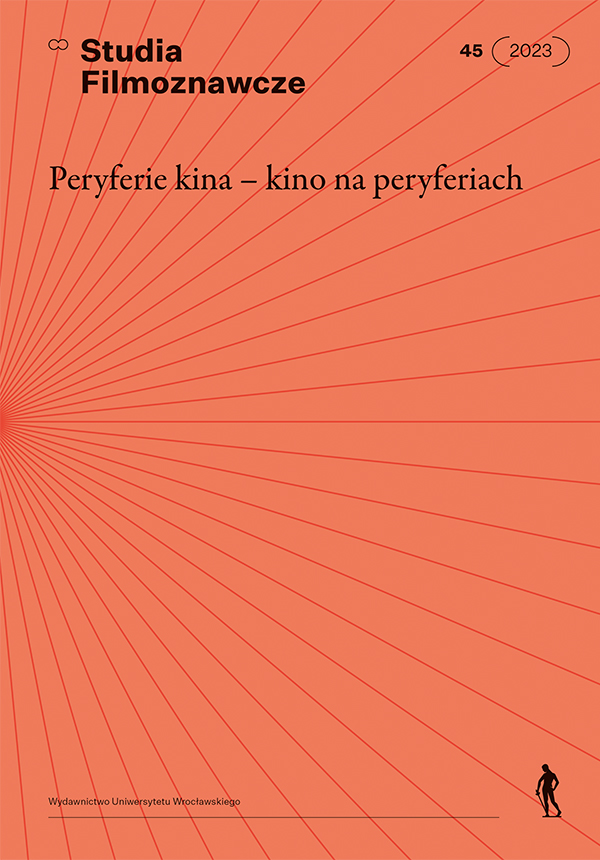

Artykuły

The article focuses on anime with realistic settings based on Japanese locations and on new practices among viewers inspired by these films. Japanese animation is famous for its ability to create fantasy landscapes and otherworldly sceneries, yet it is not known for its pursuit of realism. Animation, as a medium, is used for creating new worlds rather than depicting the existing one. But in the last two decades by presenting real sites in Japan, anime has made a remarkable shift in its orientation towards realism. Director Shinkai Makoto has established his career on rendering digital images of places from his surroundings and turning them into movies. Many other animators followed in his footsteps and created series depicting real-life locations from Tokyo as well as rural Japan. Kyoto Animation Studio is famous for using detailed renderings of real-life locations as settings of its nichijōkei anime series. These new practices in creating anime have resulted in new practices among viewers, such as seichijunrei and butaitanbō. In these new fan practices the evolution of anime as a medium can be observed: from one that creates fantastic landscapes into the one that gives a new visibility to existing locations.
The Animerica Interview: Takahata and Nosaka: Two Grave Voices in Animation, „Animerica” 1994, nr 11 (2).
Carroll L., Interview: Makoto Shinkai, https://www.animenewsnetwork.com/interview/2013-05-01/makoto-shinkai-the-garden-of-words-interview (dostęp: 2.05.2023).
Cavallaro D., Kyoto Animation: A Critical Study and Filmography, McFarland and Company, Jefferson-London 2012.
Dong B., Makoto Shinkai Q&A, https://www.animenewsnetwork.com/convention/2013/anime-expo/27 (dostęp: 2.05.2023).
Estero N., The Anime Chef Cookbook. 75 Iconic Dishes from Your Favourite Anime, Rock Point 2022.
Jones W., We Spoke to Makoto Shinkai, the Director Being Called “The New Hayao Miyazaki”, https://www.complex.com/pop-culture/2016/10/your-name-makoto-shinkai-interview/ (dostęp: 16.05.2023).
Li M., The Longevity of Anime Pilgrimages, https://web.archive.org/web/20171107005511/http://animetourism.com/longevity-of-anime-pilgrimmages/ (dostęp: 6.05.2023).
Mechademia, t. 9. Origins, red. F. Lunning, University of Minnesota Press, Minneapolis-London 2014.
Osmond A., Satoshi Kon. The Illusionist, Stone Bridge Press, Berkeley 2009.
The Routledge Companion to Media and Tourism, red. M. Månsson et al., Routledge, London-New York 2021.
Schodt F., Manga! Manga! The World of Japanese Comics, Kodansha International, Tokyo-New York-London 1998.
Stey G.A., Elements of Realism in Japanese Animation, https://etd.ohiolink.edu/acprod/odb_etd/ws/send_file/send?accession=osu1250700496&disposition=inline (dostęp: 1.11.2023).
Tanaka M., Trends of Fiction in 2000s Japanese Pop Culture, „Electronic Journal of Contemporary Japanese Studies” 14, 2014, nr 2, https://www.japanesestudies.org.uk/ejcjs/vol14/iss2/tanaka.html#_edn13 (dostęp: 15.05.2023).
Vito M., Animation, Urbanism and Tamako Market: A Discussion with Moriwaki Kiyotaka, https://likeafishinwater.com/2014/11/27/animation-urbanism-and-tamako-market-a-discussion-with-moriwaki-kiyotaka/ (dostęp: 20.05.2023).
Vito M., Pilgrimage to Hida for “Kimi no Na wa.”, https://likeafishinwater.com/2017/04/03/pilgrimage-to-hida-for-kimi-no-na-wa/ (dostęp: 20.05.2023).
Webb C., Love in a Japanese Garden, https://www.thejakartapost.com/news/2013/06/02/love-a-japanese-garden.html (dostęp: 16.05.2023).